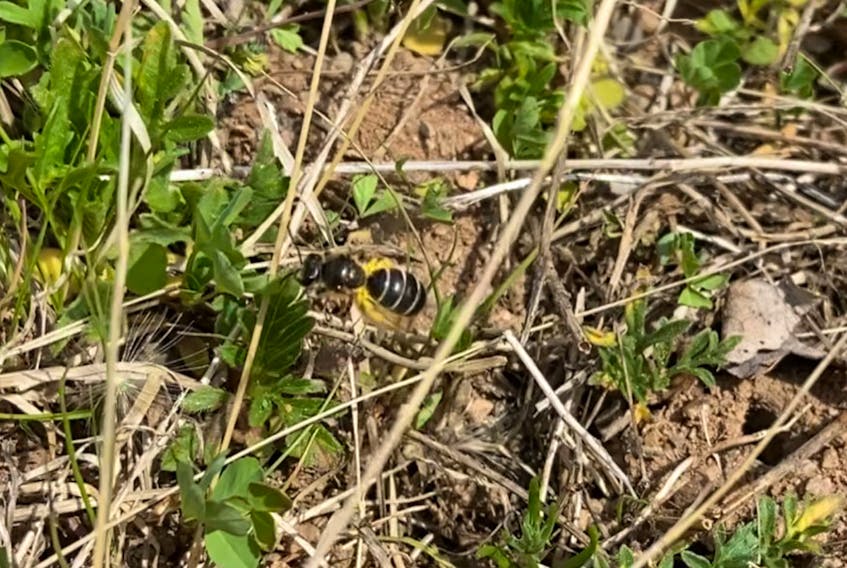Raise your hand if you knew there were bees in Nova Scotia that like to drink human sweat and live in holes in the ground.
It turns out they're quite common.
The Chronicle Herald reached out to researchers after spotting a little colony of bees busily going about their business in a little patch of lawn in Bedford.
Dave Shutler, a professor in the biology department of Acadia University, consulted with bee expert Cory Sheffield, curator of invertebrate zoology at the Royal Saskatchewan Museum, who identified the bee as Halictus rubicundus, a common sweat bee.
“Sweat bees get their name because when they look for moisture, they frequently will land on humans and lick the salty water that's on your skin,” Shutler said. “Sometimes they'll sting you but it's usually a very mild sting compared to a bumble bee, or a honey bee, or a wasp.”
The behavioural ecologist's research has studied parasites affecting birds and honey bees, with many of his students publishing papers in the field.
“There's lots of different species of sweat bees. One of the ones that I'm more familiar with has got a green metallic head and when it's coming out of its little holes in the ground, it's beautiful, it's quite attractive. It's unmistakable.”
But the Bedford bee is not as exciting in terms of it's appearance, he said. It's mostly black with small lines on the abdomen.
“It looks more or less just like a wasp,” Shutler said. “Just little bits of yellow here and there.”
But it does have an interesting history, he said, citing online sources.
“It's found all over Eurasia, and somehow someone figured out that it colonized North America by coming across the Bering Strait, when there was a land bridge between the two continents.”
Humans crossed the same link between modern-day Siberia and Alaska roughly 18,000 years ago.
“They are probably one of the most widely dispersed bees in the world,” Shutler said. “They cover ... most of North America, I should say, and a big chunk of Eurasia.”
The bees prefer loamy soil – not too much clay, not too much sand – in which to dig their burrows. In northern latitudes, they're solitary nesters, with a single female digging down roughly 12 centimetres to lay an egg in a ball of pollen and nectar, so they don't have a group hive, but there may be many bees, each in their own individual hole, in a given patch. They like south-facing slopes to take advantage of warmth from the sun.
They will mate in the fall, with the males dying off then, and the females over-winter in their burrows and start a new nest in the spring.
Shutler found it interesting that the species actually does adopt more of a social colony nature in southern regions, with some bees taking on worker-bee roles.
Shutler said he, personally, has not seen that particular bee species before but they are quite common in Nova Scotia.









